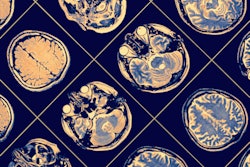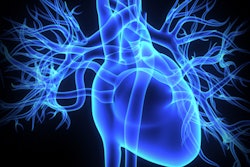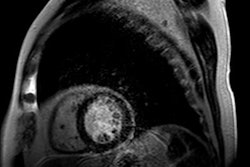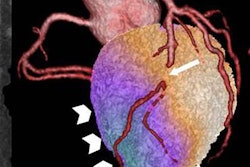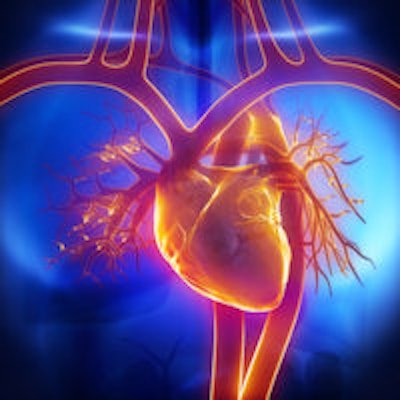
Cardiovascular MRI is a better prognosticator of risk for serious cardiovascular events than SPECT, regardless of a person's risk factors, angiography results, or initial treatment, according to a study published online May 10 in the Annals of Internal Medicine.
Researchers concluded that cardiovascular MRI is a "robust alternative" to SPECT for predicting patient outcome in terms of major adverse cardiac events (MACEs), and the findings add "further weight to the growing evidence base for cardiovascular MRI in the diagnosis and management of patients with suspected coronary heart disease."
The results come from the Clinical Evaluation of Magnetic Resonance Imaging in Coronary Heart Disease (CE-MARC) study, the largest prospective comparison of cardiovascular MRI and nuclear myocardial perfusion imaging (MPI) with SPECT. The study was led by John P. Greenwood, PhD, from the Multidisciplinary Cardiovascular Research Centre and Leeds Institute of Cardiovascular and Metabolic Medicine at the University of Leeds in the U.K. (Ann Intern Med, May 10, 2016).
A distinct advantage
With its lack of ionizing radiation, high spatial resolution, and ability to provide a functional cardiac assessment in one scan, cardiovascular MR has a distinct advantage over SPECT. However, information on the modality's prognostic value remains limited, and "there are no directly comparative prognostic data relative to other noninvasive imaging modalities in the same patient population," the authors wrote.
Therefore, CE-MARC was designed to evaluate the diagnostic performances of cardiovascular MRI and SPECT, using x-ray angiography as the reference standard, in random patients with suspected coronary heart disease. The researchers prospectively enrolled patients with suspected stable angina and at least one major cardiovascular risk factor between March 2006 and August 2009.
The 752 eligible patients were scheduled to undergo cardiovascular MRI and SPECT, followed by x-ray coronary angiography within four weeks, regardless of their treatment. After angiography, SPECT results were made available upon request to determine if a patient needed revascularization, so as not to delay necessary treatment. However, cardiovascular MRI results were not revealed.
The multiparametric cardiovascular MRI protocol was performed on a 1.5-tesla MRI scanner (Intera, Philips Healthcare) during stress and rest perfusion, along with coronary MR angiography with late gadolinium enhancement. Results were deemed positive if, among other findings, there was a regional wall-motion abnormality, regional ischemia on stress or rest cardiovascular MRI perfusion scans, coronary artery stenosis of at least 50% on MR angiography, or myocardial infarction as seen on late gadolinium enhancement images.
SPECT imaging was conducted on a dedicated cardiac gamma camera (Cardio-C, Mediso), with patients undergoing a two-day protocol using technetium-99m tetrofosmin. SPECT stress and rest electrocardiography-gated images used the same intravenous adenosine protocol as the cardiovascular MRI scans.
5-year follow-up
For five-year follow-up purposes, the researchers defined major adverse cardiovascular events as death, myocardial infarction/acute coronary syndrome, unscheduled coronary revascularization, or being admitted to a hospital for stroke, transient ischemic attack, heart failure, or arrhythmia.
The group also created a "hard" clinical event category, which included only death, nonfatal myocardial infarction, or acute coronary syndrome, to further compare outcomes for cardiovascular MRI and SPECT. To determine which modality was more proficient at predicting time to a major adverse cardiovascular event, the researchers used both univariable (log-rank test) and multivariable (Cox proportional hazards regression) analysis.
The multivariable model included the "major cardiovascular risk factors of age, sex, total cholesterol level, hypertension, smoking, diabetes, and family history, because they are known to have a strong association with MACEs," the authors wrote.
At the five-year follow-up mark, 628 patients had undergone cardiovascular MRI, SPECT, and angiography, and these individuals constituted the main study population. The median follow-up time was 80.7 months, ranging from 68.3 to 91.6 months.
Cardiovascular outcomes
When all the outcomes were tallied, there were 171 major adverse cardiovascular events in 104 individuals among the population of 628 subjects, for an event rate of 16.6%.
In the univariable analysis, the researchers found that an abnormal cardiovascular MRI was a better predictor of time to a major cardiovascular event over five years, with a hazard ratio of 2.77 (p < 0.001). For an abnormal SPECT result, the hazard ratio was 1.62 (p = 0.014).
X-ray angiography achieved similar prediction time to MACE (hazard ratio, 2.64; p < 0.001), compared with cardiovascular MRI and SPECT, basing its evaluation predominantly on the degree of a patient's stenosis.
MRI's advantage improved in multivariable analysis, after adjusting for known cardiovascular risk factors. In this analysis, only cardiovascular MRI remained significantly associated with time to MACE, with a hazard ratio of 2.34 (p = 0.001). SPECT's hazard ratio was 1.4, which was not statistically significant (p = 0.10).
The researchers also used the Akaike Information Criterion model to determine which modality better explained the variation in time to MACE within the multivariable analysis. The Akaike model is used to measure the validity of statistical models, with a score greater than 10 indicating a superior result.
Cardiovascular MRI achieved a rating of 13.53 with the Akaike model, compared with 0.68 for SPECT.
Clinical relevance
"These findings demonstrate that cardiovascular MRI is a robust alternative to SPECT in predicting patient outcome and adds further weight to the growing evidence base for cardiovascular MRI in the diagnosis and management of patients with suspected coronary heart disease," the authors wrote.
Limitations of the study included CE-MARC's single-center design, although the facility does perform a high volume of cardiovascular MRI and SPECT scans, according to Greenwood and colleagues.
"Any extrapolation to low-volume centers should be done with caution," they added. "However, a single site and unified pharmacologic stress protocol ensured consistency in cardiovascular MRI and SPECT and improved direct comparison between the modalities."
The British Heart Foundation is the primary funding source for the CE-MARC study.




